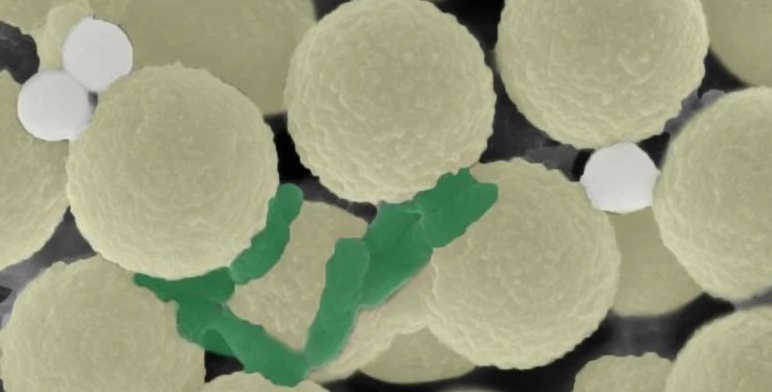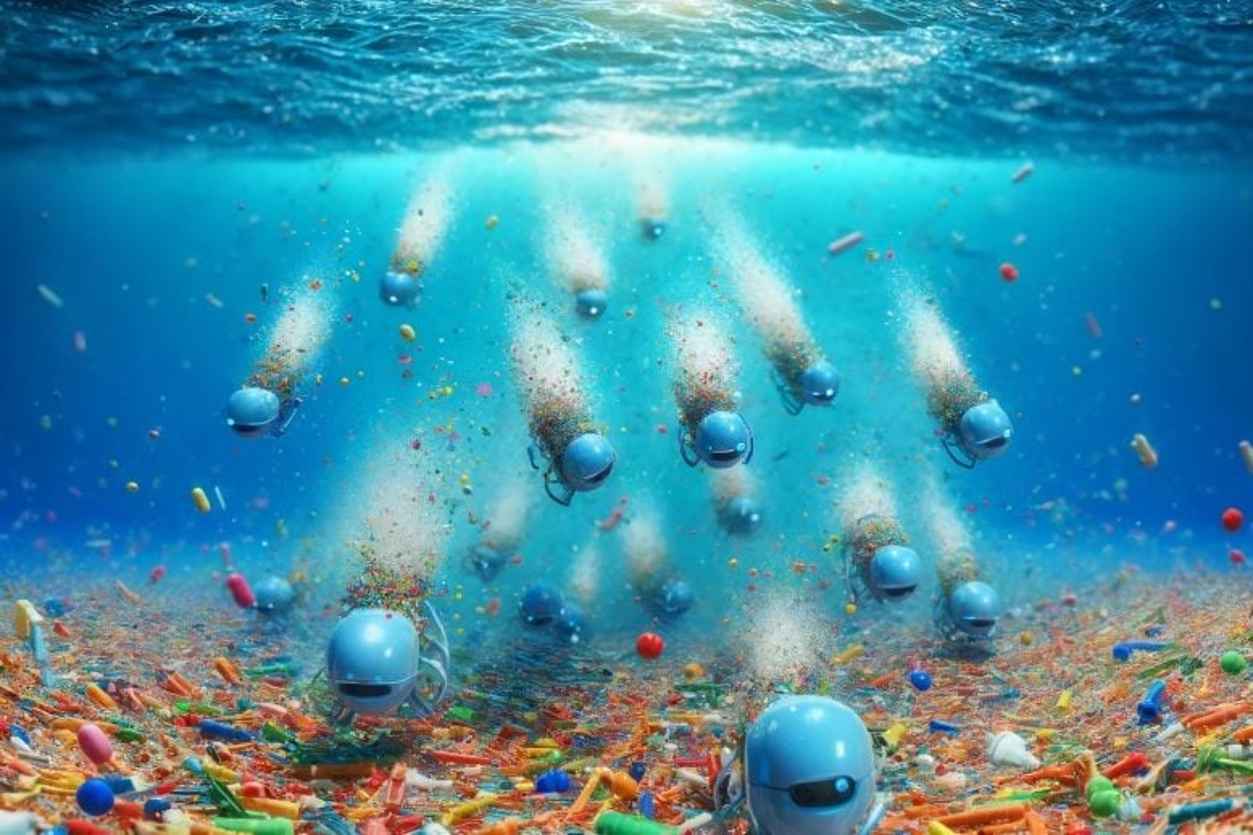You know how when you toss out old food wrappers or broken toys, they eventually turn into tiny pieces of plastic that end up polluting our oceans and rivers? Well, those little plastic bits are a nightmare to clean up, especially because they attract bacteria that can make us sick.
But here’s the cool part: scientists have come up with these super tiny robots, like something out of a sci-fi movie, that can actually snatch up those plastic pieces and bacteria from the water.
Then, they can also clean themselves off and get ready to do it all over again. It’s like having little eco-friendly cleaners zipping around, helping to keep our waters clean.
You know those tiny bits of plastic, called microplastics, that are smaller than 5 millimeters? They’re a big problem because animals can accidentally eat them, which can cause all sorts of harm. And guess what? Those microplastics might end up in the food we eat too, because they can get passed up the food chain.
But wait, there’s more. These little plastic pieces aren’t just floating around innocently. They’re like magnets for bacteria, including the nasty ones that can make us sick if we ingest them.
So, to tackle both the plastic and bacteria problem in water, scientists like Martin Pumera and his team came up with these amazing tiny robots that work together, kind of like fish in a school, to clean up the mess. It’s pretty smart stuff!

Building The Bots
The creation process of these bots involved connecting positive-charged polymer strands to tiny magnetic particles. These particles respond to magnetic fields, enabling movement.
The polymer strands have an affinity for both plastic materials and microorganisms. The resulting robots, each measuring 2.8 micrometers in diameter, demonstrate remarkable capabilities.
Under the influence of a rotating magnetic field, these robots exhibit collective behavior, forming swarms. Researchers also observed that by controlling the number of robots organizing into flat clusters, they could manipulate the swarm’s dynamics, affecting both movement and velocity.
In a recent series of laboratory experiments, a team of scientists embarked on a mission to replicate the intricate dance between microplastics and bacteria commonly found in our environment.
Their method? Introducing fluorescent polystyrene beads, a mere micrometer in width, along with actively swimming Pseudomonas aeruginosa bacteria – notorious for causing a variety of infections including pneumonia – into a water tank.
The next phase of their investigation involved the introduction of microrobots into the mix. These tiny machines were subjected to a rotating magnetic field for precisely 30 minutes, with intervals of activation and deactivation every 10 seconds.
Capture Rate of Approximately 80%
Among the various concentrations tested, it was observed that a density of 7.5 milligrams per milliliter yielded the most promising results. At this concentration, the microrobots exhibited an impressive capture rate of approximately 80% of the bacteria.
Remarkably, the presence of these microrobots also coincided with a gradual reduction in the number of free-floating plastic beads, as they were magnetically drawn towards the robots.
Following this stage, the researchers employed a permanent magnet to gather the microrobots, subsequently utilizing ultrasound to detach the bacteria adhering to their surfaces. The removed microbes were then subjected to ultraviolet radiation, effectively completing the process of disinfection.
Interestingly, even after undergoing this thorough decontamination process, the microrobots retained their efficacy in capturing both plastic and bacteria, albeit in reduced quantities.
According to researchers the innovative microrobotic system presents a promising avenue for the purification of water contaminated with plastic debris and harmful bacteria.







